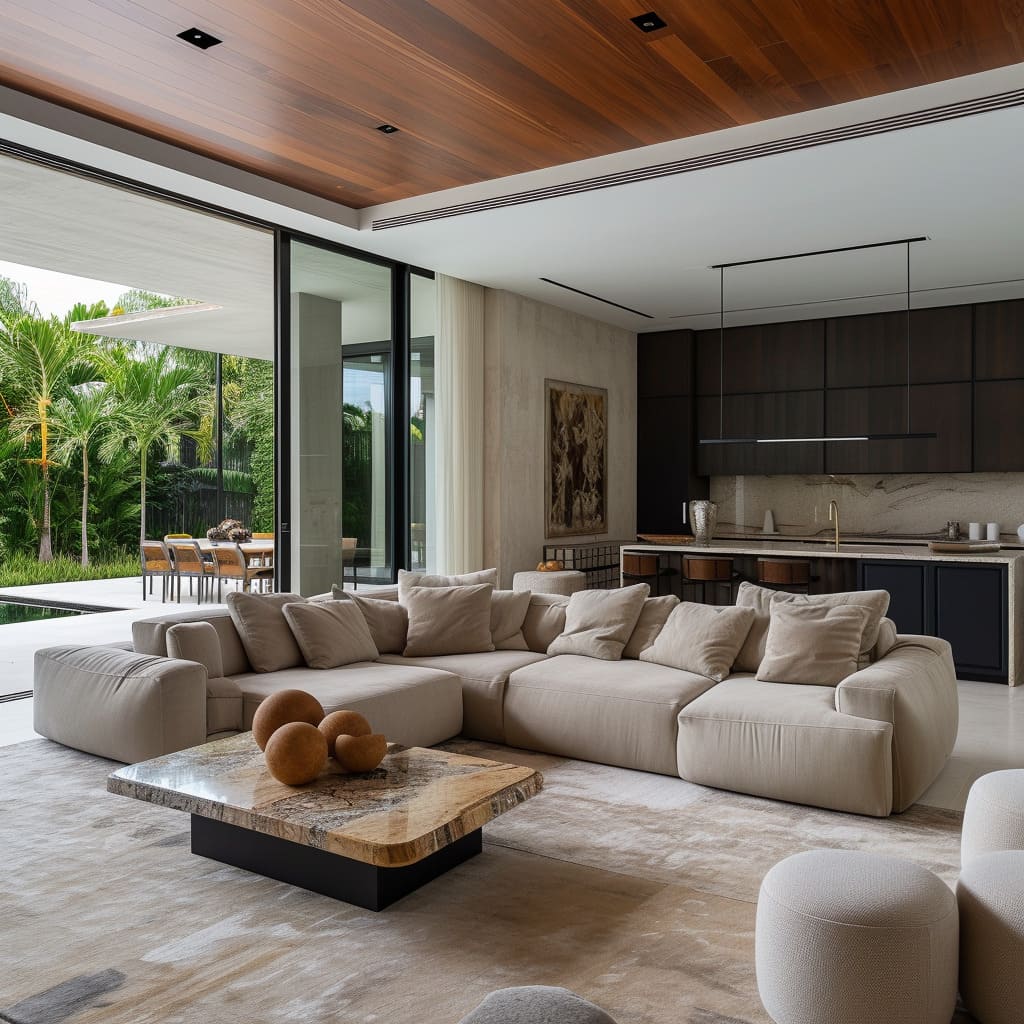Please provide the list you are referring to. I need the list to be able to write the article.
Once you provide the list, I can create an article that:

Focuses on the first item in the list.
I look forward to creating this article for you! ✨
List Number 2:
Embrace the Power of Negative Space: A Cornerstone of Serene Open-Plan Minimalist Living Rooms
In the pursuit of a serene open-plan minimalist living room, the concept of “negative space” emerges as a powerful ally. It’s not about emptiness, but rather a conscious and intentional absence of clutter. This deliberate lack of visual noise creates a sense of calm and spaciousness, allowing the eye to rest and the mind to unwind.
Imagine a living room where every piece of furniture, every decorative element, has been carefully considered. There’s a deliberate lack of visual distractions, allowing the natural light to flood in and dance across the open floor plan. This isn’t about deprivation, but rather a celebration of simplicity and functionality.
The Art of Subtraction:
Embracing negative space is essentially the art of subtraction. It’s about carefully curating your possessions and only keeping those that bring joy, serve a purpose, or enhance the overall aesthetic. This requires a conscious effort to declutter and let go of anything that doesn’t truly contribute to the serene ambiance you’re aiming for.
Start by decluttering. Go through your belongings and ask yourself: “Does this item bring me joy? Is it functional? Does it enhance the overall aesthetic of the room?” Be honest with yourself and let go of anything that doesn’t meet these criteria.
The Benefits of Negative Space:
The benefits of embracing negative space in your living room are numerous:
Reduced stress: Clutter can be visually overwhelming and contribute to feelings of stress and anxiety. By minimizing distractions, you create a more peaceful and relaxing environment.
Incorporating Negative Space into Your Design:
Embrace clean lines: Choose furniture with clean lines and simple designs. Avoid ornate details that can add visual clutter.
By embracing the power of negative space, you can transform your open-plan living room into a sanctuary of calm and tranquility. It’s a reminder that true luxury lies not in the accumulation of material possessions, but in the intentional curation of a space that nourishes the soul.
Finding Beauty in Simplicity: The Elegance of Minimalism
Minimalism is more than just a design aesthetic; it’s a philosophy. It’s about prioritizing experiences over possessions, focusing on what truly matters, and finding joy in the simple things. In the context of an open-plan living room, minimalism translates to a space that is both functional and beautiful, free from clutter and distractions.
The beauty of a minimalist living room lies in its simplicity. Every element has a purpose, and every detail has been carefully considered. There’s a sense of intentionality in every aspect of the design, from the carefully curated furniture to the thoughtfully chosen artwork.
The Core Principles of Minimalism:
Less is more: This is the fundamental principle of minimalism. By eliminating unnecessary clutter, you create a sense of spaciousness and calm.
Creating a Minimalist Living Room:
Start with a blank canvas: Before you start adding anything to the room, declutter completely. Remove any items that you don’t use or love.
Living the Minimalist Lifestyle:
Minimalism is more than just a design aesthetic; it’s a way of life. It’s about cultivating a sense of contentment and appreciation for the simple things.
Practice mindfulness: Pay attention to your thoughts and feelings. Be mindful of your consumption habits and make conscious choices about what you bring into your home.
By embracing the principles of minimalism, you can create an open-plan living room that is both beautiful and functional, a space that reflects your values and enhances your well-being.
The Role of Texture in a Serene Minimalist Living Room
In the realm of minimalist design, texture plays a crucial role in adding depth and interest to an otherwise pared-down aesthetic. While minimalism often emphasizes clean lines and simplicity, the absence of visual clutter doesn’t equate to a lack of visual interest.
Texture provides a subtle yet impactful way to add dimension and warmth to a minimalist living room. It adds visual interest without overwhelming the space, creating a sense of depth and tactility that can be both soothing and stimulating.
Incorporating Texture into Your Minimalist Living Room:
Rugs: A plush rug can add warmth and comfort to a minimalist living room. Consider a natural fiber rug, such as a jute or wool rug, for a touch of earthy texture.
Finding the Right Balance:
While texture can add depth and interest to a minimalist living room, it’s important to find the right balance. Too much texture can create a sense of visual clutter and overwhelm the space.
Start with a neutral base: Begin with a neutral color palette and then introduce texture gradually.
By carefully incorporating texture into your minimalist living room, you can create a space that is both visually appealing and incredibly inviting. It’s a reminder that even in the most pared-down spaces, there is room for creativity and individuality.
EmoticonEmoticon